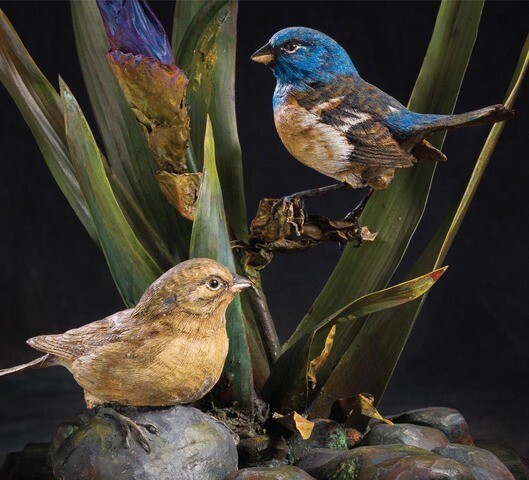
Pair of Lazuli Buntings with Iris, 1983 (pg. 152)
Basswood, copper foliage; 18 x 11 x 10 in.
Over the years, President Packer has developed a great pastime of painting and carving. While he was painting or carving, his mind was carving out a sermon. He has created what some describe as masterpieces. To him, they are simply an attempt to capture the beauty of nature.
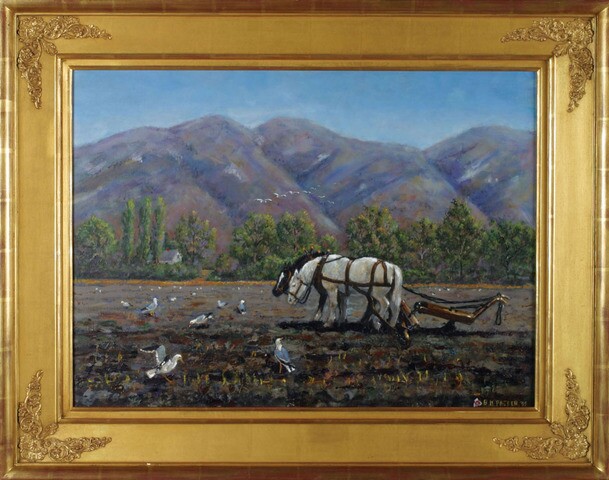
The Bishop's Team, 1999, (pg. 112)
Acrylic on canvas; 22 x 30 in.
President Packer painted this scene of a faithful bishop's horse team waiting patiently in the field while he went to help his ward members. You can read about the story as he told it in his April 1999 general conference address.
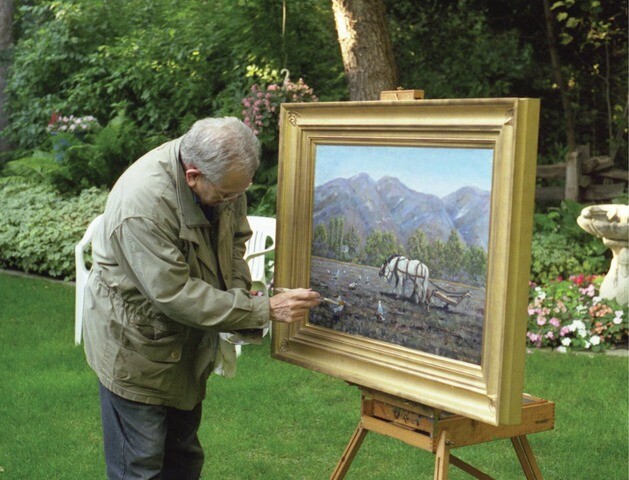
President packer putting the finishing touches on his painting in his backyard. (pg. 113)

Singing Meadowlark, 1990, (pg. 133)
Acrylic on canvas; framed, 11 1/2 x 14 in.
President Packer explains that meadowlarks sing "Brigham City is a pretty little town," but people often mistakenly interpret the song to be about their own hometown. Beyond the fields can be seen President Packer's hometown, with the steeple of the Box Elder Tabernacle just visible.
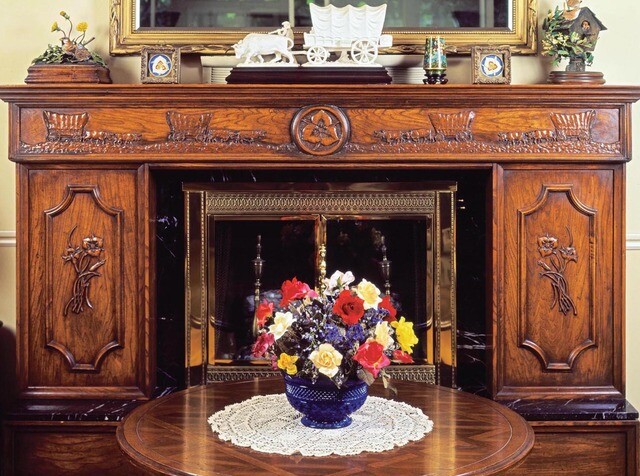
Living Room Fireplace, 1970, (pg. 55)
Ash, carving
President Packer says they redid the fireplace as a family project, choosing the sego lilies and covered wagons to honor their pioneer heritage.
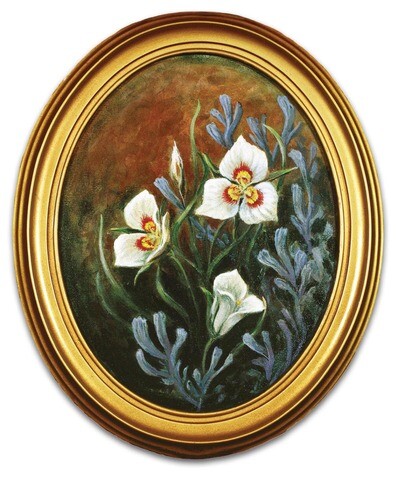
Sego Lilies and Sagebrush, 1992, (pg. 73)
Acrylic on canvas; framed, 14 x 11 in.
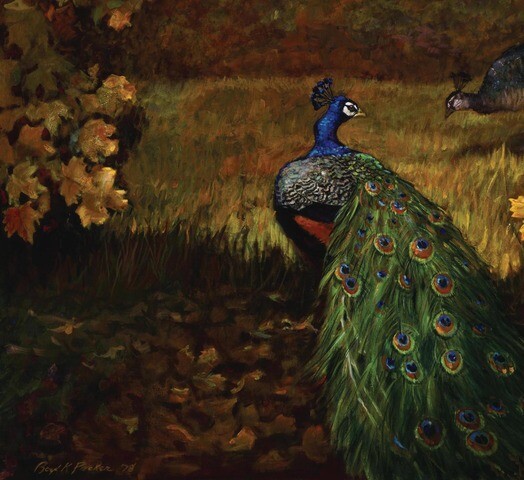
Peacocks and Autumn Leaves, 1978, (pg. 130)
Acrylic on canvas; framed, 30 x 40 in.
President Packer's family kept a small flock of peacocks in their yard for several years. "I could go outside and whistle, and they would come running for a handout," he says. "Once they developed a taste for our neighbor's raspberries, I had to keep them penned up.
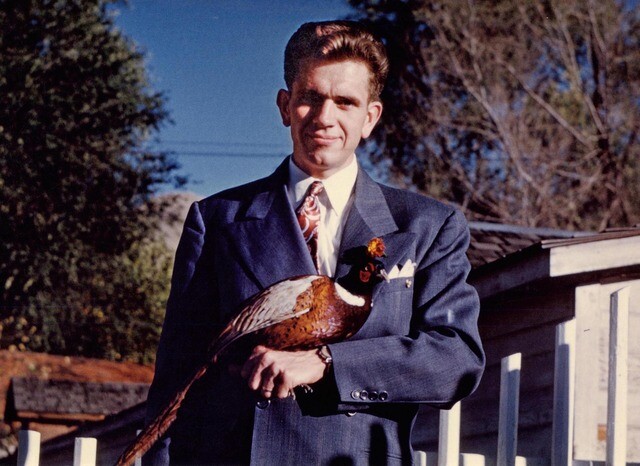
Photo of young President Packer with bird, (pg. 0)
"I have always loved nature: animals, flowers, and especially birds," says President Packer. "I think I was born with it."
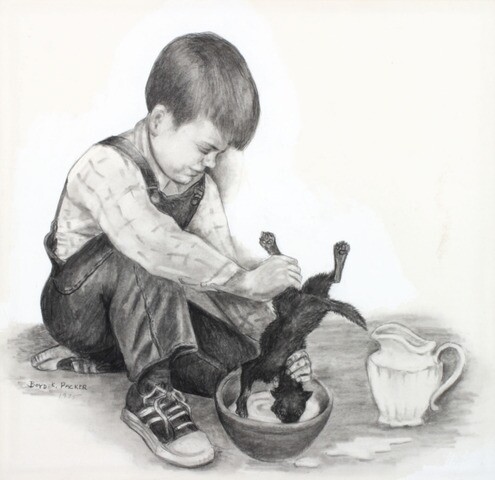
Sketch of son and kitten, 1975 (pg. 81)
One day President Packer came home to find his five-year-old son feeding his kitten by holding it tightly around the throat and dipping it head-first into the milk, while the animal complained loudly and struggled to escape drowning. "It is obvious that there are better ways to feed a kitten," he says. "There are also better ways to teach."
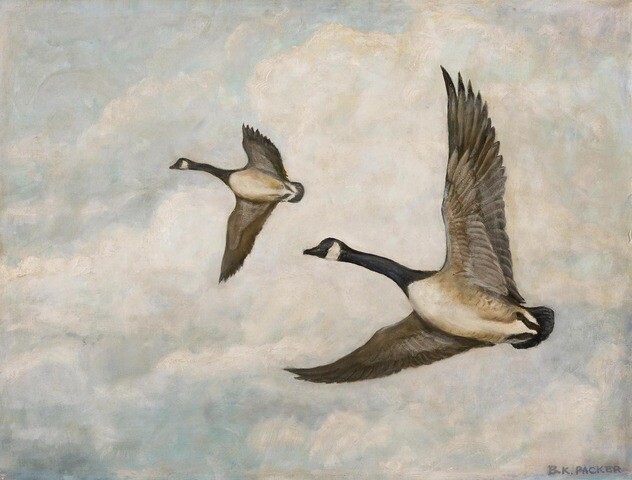
Flying Geese, 1968, (pg. 70)
Acrylic on canvas; framed, 18 x 24 in.
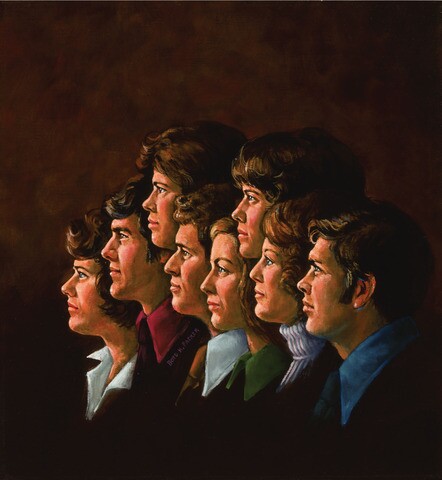
Family, 1974, (pg. 80)
Oil on canvas; framed, 18 x 20 in.
While President Packer was serving as an Assistant to the Twelve, President Spencer W. Kimball suggested he write a book, and somewhere in the writing process, it was also suggested that he do the illustrations for it. So all the drawings in Teach Ye Diligently, along with the cover (pictured), which is a portrait of some of his children and their spouses, were done by him as well.
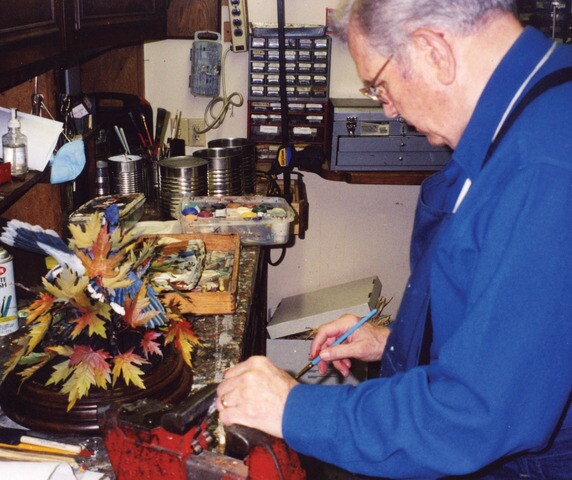
In preparation for a carving, President Packer would study paintings and photographs, observe their habits and actions in real life, and obtain museum specimens to measure the length and number of feathers in the wings and tails, etc. He would do the same with the plants with which the animals associated.
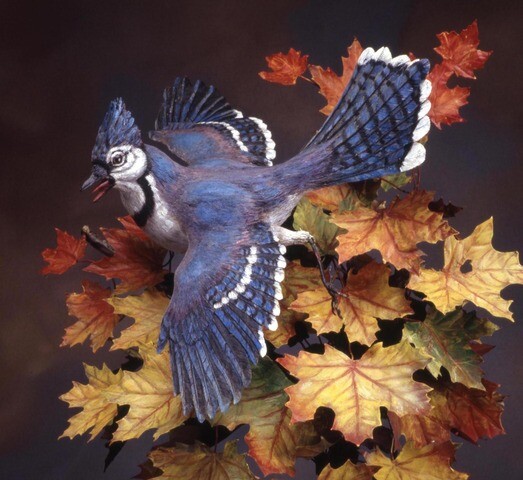
Male Blue Jay on Norway Maple Leaves, 1982, (pg. 151)
Basswood, copper foliage, base milled from a pattern used to replace molding in the Salt Lake Temple; 17 3/4 x 17 x 12 in.
"Carving was restful to me. Sometimes when I got a little stressed or cranky, my wife would say, 'Well, you had better start another carving,'" says President Packer. "Bird carving kept my hands busy and my mind free to think, ponder, and pray."
To learn more about President Packer's book, click here.
